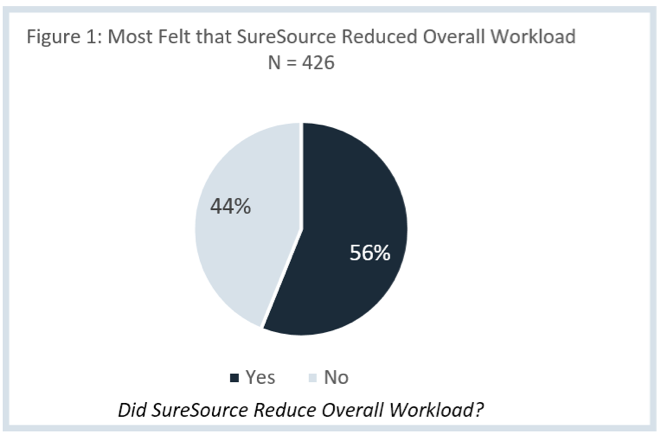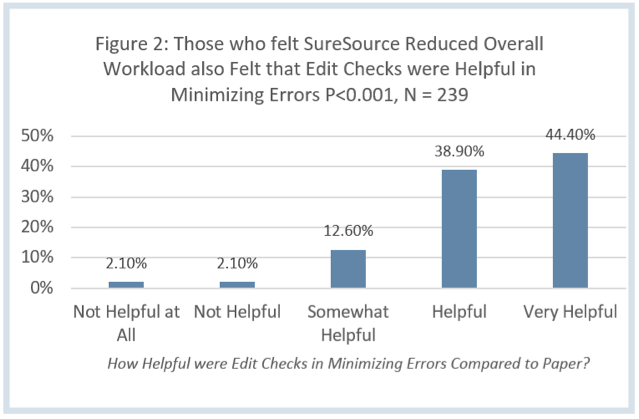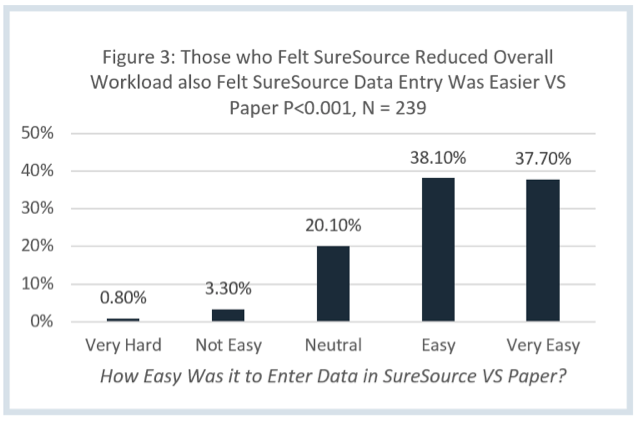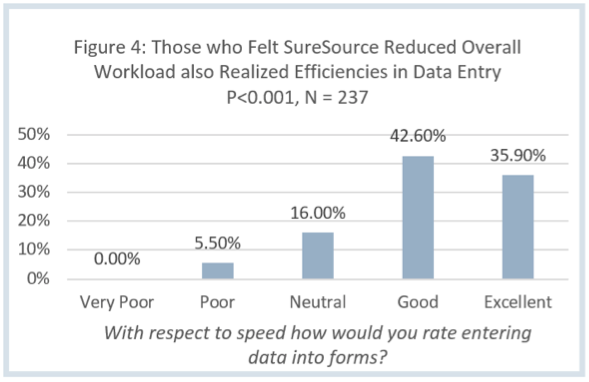Data Shows eSource Reduces Site Workload
Clinical Ink, an eSource solutions provider, offered Applied Clinical Trials raw data from its Site Impact Survey for analysis. This article will delve into this data to uncover breakthrough trends regarding the utilization of eSource on workload reduction at study sites.
While the implementation of novel technologies in clinical trials faces cultural barriers at biopharmaceutical enterprises, eSource is starting to gain traction, and is now generating data that demonstrates its impact on clinical operational productivity.
Clinical Ink, an eSource solutions provider, offered Applied Clinical Trials raw data from its Site Impact Survey for analysis. This article will delve into this data to uncover breakthrough trends regarding the utilization of eSource on workload reduction at study sites.
Site Impact Survey
The Site Impact Survey was designed by Clinical Ink to evaluate clinical research coordinator and investigator experiences with Clinical Ink’s eSource system (SureSource) compared to paper source. Clinical Ink issued surveys to 2,402 research coordinators and investigators who have used SureSource in clinical trials, and received responses from 517 eligible individuals. The survey asked questions about comparing differences between paper-based studies and trials using eSource. We leveraged multifactorial statistical assessments, and confirmed statistical fit via chi-square models in this analysis.
Data Analysis and Results
Survey results demonstrate that most respondents felt SureSource reduced overall workload (Figure 1).

This finding led us to investigate factors associated with reducing workload. Figure 2 illustrates that most users who felt SureSource reduced overall workload also believed that Edit Check functionality was helpful in minimizing errors; in other words, this data may suggest that study sites felt a reduction in overall workload due to data validation functionality, such as edit checks.

Figure 3 shows that most who felt that SureSource reduced overall workload also perceived easiness in data entry compared to paper trials. This data potentially suggests that sites have found the electronic format to be much easier to comprehend and visualize compared to paper forms. For example, SureSource’s edit check functionality contains green or red marks to confirm data entry, quality and validity.

Figure 4 demonstrates that most users who realized a reduction in workload via SureSource also saw efficiencies in data entry compared to paper studies. This data indicates that sites could have realized efficiencies in data entry due to not having to record data on paper forms, and then reentering that data into EDC; with eSource, sites need to enter data once, directly into the system.

Qualitative Assessment: What Are Sites Saying?
Despite data confirming positive trends with eSource utilization in clinical operational workload reduction compared to paper-based trials, we took the opportunity to further investigate these findings with qualitative research. Correspondingly, we interviewed and gathered comments from study sites to better understand why these trends are prevalent. Our interviews have unveiled that study sites realized notable on the ground benefits in reducing clinical trial workload with SureSource, especially pertaining to eliminating data re-entry into EDC, and addressing issues in realtime while the patient and study staff are present.
Donna Straatman, RN, BSN, CCRC, clinical research coordinator at Mercy Health System, said, “using SureSource cut down on triplicating our work; for example, we enter data directly into the system while we’re still with the patient, their chart is there, and the PI is available to address issues. Once we finish the patient visit, we’re done; there’s no further work, there’s no follow up work. It’s definitely a good feeling to not have to think about spending a portion of my day re-entering data into EDC; SureSource saved at least 30% of my time, and that has allowed me to focus on doing more important things, such as spending more time with the patient during visits, recruitment efforts, and seeing more patients.”
Dr. Leonard Chuck, co-medical director at Diablo Clinical Research, indicated, “smart electronic source documents represent the first real-time data stream we have ever experienced. This led to eliminating electronic data transcription and the myriad of queries that the paper process generates. The workload for a site becomes "front loaded" and eliminates the "backend" work.”
Summary
This analysis adds evidence to the notion that eSource reduces study site workload. Results demonstrate that eSource improves workload productivity by eliminating data reentry into EDC. Moreover, this analysis may suggest that using eSource can enhance data quality, henceforth, we will leverage Clinical Ink’s Site Impact Survey to further evaluate the effect of eSource on data quality in a future article.
Clinical Ink is attending Risk-Based Trial Management – Is RBM Only About Monitoring, November 5-6, 2015 in Philadelphia. From CBI, the forum continues the conversation with a renewed focus on bringing in-depth case studies and discussions on the evolution of this clinical trial change. CBI is a division of UBM Life Sciences.
Improving Relationships and Diversifying the Site Selection Process
April 17th 2025In this episode of the Applied Clinical Trials Podcast, Liz Beatty, co-founder and chief strategy officer, Inato, discusses a number of topics around site engagement including community-based sites, the role of technology in improving site/sponsor relationships, how increased operational costs are impacting the industry, and more.
SCOPE Summit 2025: Enhancing the Patient Experience Through Site Centricity
February 12th 2025In an interview with ACT senior editor Andy Studna at SCOPE Summit, Ashley Davidson, vice president, product lead - sponsor tech strategy, Advarra, highlights the need for more site-centric approaches in study startup.